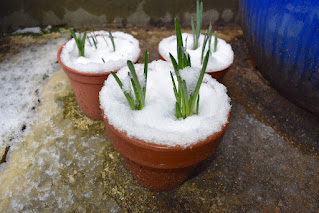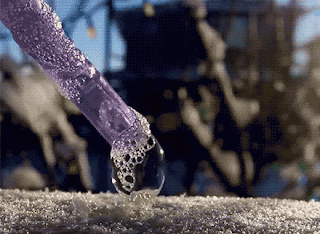At this time of year the weather in North America is wildly variable. As I write this, there are parts that are getting blasted by a winter storm and where I sit in Southern Arizona the weather is sunny and in the 70s. Not matter where you are sitting, it is time to get your plants winterized so they have the best chance to make it through to spring. Some of the following pointers may not pertain to your locale but others will, so take a moment to double-check your preparations.
CLEAN UP & REMOVAL

After a busy growing season, you will need to tidy things up in the fall. Now is the time to pull weeds, remove annuals and trim down perennials. Be sure to avoid cross-contamination and carefully dispose of any cuttings that may be harboring insects or diseases. Having said that, if your cuttings are clean it is best to leave some where they lie. A carpet of plant material offers insulation to plant and tree roots, provides shelter for bees and other desirable insects, and is the basis for rich soil in the spring.
A word about leaves:
Leaves will provide all of the above advantages and should not be removed completely. Just be sure to keep them away from the house. Undesirable insects can hide in leaf litter and migrate into the comfy warmth of your home once they get cold, but most can’t travel very far. Also, when considering your leaves please remember that they are 100% biodegradable and naturally a part of the season-change process, and that plastic is killing our planet. Please consider this thoroughly before raking up leaves and putting them in plastic bags to send to the dump.
MULCH
Mulch, whether commercially produced or made with your leaf litter and other materials, is an essential step in getting your plants through winter. It should be placed around plants, trees and shrubs. Be generous with it – you’ll want at least a 3-5 inch layer; and more if you live in cold country. Adding leaves, hay, straw, cornstalks and other no-compacting materials will create a more robust mulch. Save some mulch to add to your hibernating flower beds and gardens; extra organic matter in them now will pay off later.
CLOCHES
If you are worried about a sudden frost and/or have smallish plants in the ground to protect, consider the simple cloche. A cloche is a usually bell-shaped cover made of glass or plastic that you can plop over your plant. Cover the plant before nightfall and remove the cloche the next day so they utilize the sun. You can purchase cloches, but there are any number of items around your house that can be repurposed. Cloches are not a solution in super-cold regimes with hard frosts.
TREES
Trees take the first step in getting ready for winter by dropping their leaves. But we humans can take
further steps to help them get to spring. At this point in the season, a good tree wrap or frost protection bag can do a great deal to help a tree – they can temper the harsh environmental factors of winter, discourage nibbling mammals, and are an excellent barrier insect control (here are some wraps that ARBICO offers). Sunscald (caused by warm daytime temperatures that drop way down after dark), winter burn (caused by water loss through foliage) and damage caused by snow, ice and animals are all serious threats to tree health. This article gives some succinct and helpful steps to take to reduce the risk from these factors. For more on how winter affects tree, here is my blog on just that from December 2020. CONTAINER PLANTS
Because the sides of a pot are exposed to the elements, container plants are very vulnerable and often not able to survive the winter. If possible, bring them inside to an area that gets sufficient sunlight. Before you bring in any plant from the outside, be certain it is insect-free so that you are not introducing problem into your home. If you have large containers that cannot be moved, your best bet is to bundle them up by wrapping layers around them. This could be anything from burlap to fabric to even bubble wrap (the air in the bubbles makes a surprisingly good insulator). Another option is to remove the plant and either replant it inside or put it in a spacious container where the soil around it can act as an insulant. You may want to hedge your bets and still wrap this larger container. TROPICALS & HOUSEPLANTS

Many of the houseplants that people love are native to tropical environments. This is also true of many of the popular plants and grasses used in landscaping and patio décor. All of which means that they will not survive outside in the cold. When used in outdoor settings, these types of plants should be considered as annuals. If you are not okay with having them die or having to replace them, it is probably best to not use them in the first place. Re-locating them inside may work in some instances, but you will need to provide a place that gets lots of sunlight all year round and has a stable temperature. This can be problematic since the level of sunlight goes down in the winter and the temperature inside a winter home can be all over the place. These caveats for tropical plant care extend to houseplants, as most of them are tropical as well. To further understand the particular winter needs of plants inside homes in the winter, please refer to my blog on the subject
here.
You should keep watering your plants as usual right up until you get a hard frost. The same can be said for most garden chores. And when you get your first snow, your well-tended garden will have a strong chance of coasting through it all (
read more here).
Take Care
Submitted by Pam














No comments:
Post a Comment